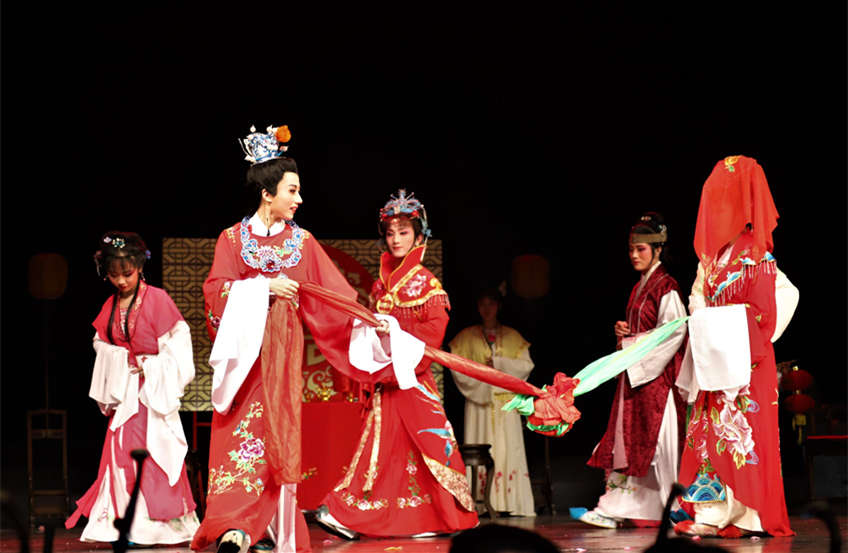Yue Opera (Shanghai)
The Yue opera is one of Han nationality`s five operas. Now, it is the second largest opera in China. Accompanied by the flavor of elegance, the Yue opera is full of the fresh and leisure singing as well as the vivid and moving performance. The most common theme of Yue opera is “gifted scholars and beautiful ladies”. Mainly centralized in Zhejiang Province, Jiangsu Province, Fujian Province and Shanghai City, the school of Yue opera is various. It was spread over the whole country except Tibet, Guangdong and Guangxi in its golden age. According to the preliminary statistics, there are more than 280 professional troupes and thousands of amateurish troupes in China. The Yue opera also has high reputation and wide mass base on abroad. Being the most extensive local opera, the Yue opera was listed in the first batch of national nonmaterial cultural heritage list by the state council on May 20, 2006.

The History of Development
The Yue opera was born in 1906 as “little song class”. Its predecessor is “Luodi Changshu”, a popular folk storytelling and singing art in Sheng County, Zhejiang Province. Basically the most of artist is male farmer, whose songs are accompanied with the musical instruments called “Wusixian”. The plays are mainly some small folk drama played in the villages and towns of Zhejiang Province.
The “little song class” was spread into Hangzhou in 1910 and to Shanghai in 1917. The opera was called “Shaoxing Wenxi” since the early 1920s. In July 1923, the first female class was established in Shijia`ao, Sheng County. The female classes were largely emerged in the early 1930s. In addition to the male class and the female class, there were also mixed classes at that time.
In October 1942, YuanXueFen absorbed some new literary and art workers to participate in the play. They reform the Yue opera into a comprehensive one, which was called the “new Shaoxing opera”. Since the September 1944, the main theatres of Shanghai were on the path of reform.
One of the most important marks of the new Shaoxing opera is abolishing screen table system and using the new full script. The content of it mostly is the anti-feudal, the exposing on darkness of society and the promoting of patriotic ideas. In September 1946, the vice President Zhou Enlai pointed out that it is the Communist Party`s duty to do a well done job in the field of opera after he watching the play of Snow Sound Troupe in Shanghai.
The first local opera seminar was held for the field of Yue opera in July 1949. On April 12, 1950, the East China Shaoxing Opera Troupe Experiment, the first state-run troupe was established. The state-run Zhejiang Shaoxing Opera Troupe Experiment set up in1951 and the Shanghai Yue Opera Theatre was found on March 24, 1955.
The Art Feature
The singing tune of Yue opera school is composed of two major parts. Different schools of the Yue opera have different techniques and skills in the organization of tune. Each of them shapes its basic style through the changing of melody, rhythm and Banyan. The ceaseless repeats and changes in melody and the customary tone express the core and key of artistic characteristic in various kinds of schools. As far as singing method is concerned, the Yue opera mainly focus on words, voice and affection to present its unique character. The Yue opera form the diverse beauty through the change of sound and tone. In some subtle places, there are many special singing forms, which can better reflect the different vocals of various schools.
More about Chinese Opera: